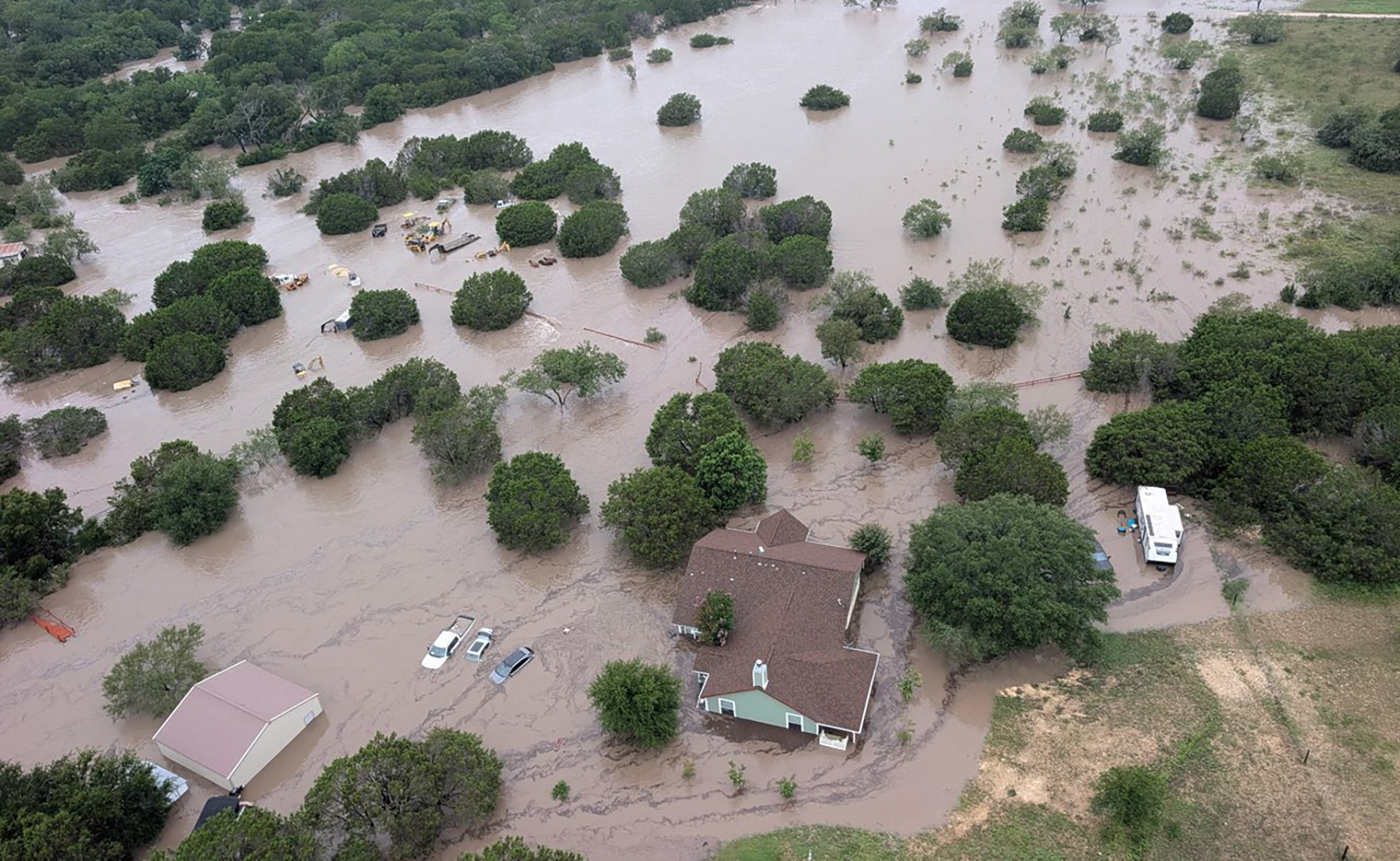 U.S. Coast Guard
U.S. Coast Guard The deadly floods that struck Texas Hill Country late last week left us all with the same question: What can we do when an unimaginable tragedy strikes?
As the death toll surpassed 100 Tuesday, including 27 children and counselors at an all-girls summer camp in Kerr County, those who spend their lives trying to protect the public from such calamities pondered how to help those in need and how to ameliorate future incidents.
Further reading:
- Changing environment means flooding no longer just a summer thing
- How civil engineers must adapt to the new risks of flooding
- Protect structures from flood risks with new ASCE standard
Andy Carter, P.E., a senior engineering scientist at the University of Texas’ Center for Water and the Environment, is an expert in hydrologic and hydraulic design. In the aftermath of the tragedy, Carter emphasized that educating those in one’s life about the dangers is crucial.
“Talking to your neighbor about what happened and what can happen improves the level of understanding about what this event means,” he said. “Everybody who sees an accident wants to be an expert. Sometimes you need to lean on the experts themselves to give you a better understanding and better vision as to what’s happening. Those are important conversations to have.”
During emergencies of this magnitude, people of varying backgrounds are involved in immediate rescue and longer-term response activities, said Carol Haddock, MPA, P.E., F.ASCE, who last month was voted in as ASCE’s next president-elect. Civil engineers play integral roles in these groups.
“Civil engineers are probably already inspecting bridges, low-water crossings, and structures to determine safety for both short- and long-term use,” Haddock said. “Many will also be on-scene volunteering where needed – logistics of receiving donations, joining teams to search along the river, etc.”
Also, many of the triggers for alerts are based on flood-plain mapping performed by engineers for the Federal Emergency Management Agency to support the National Flood Insurance Program, Haddock said. This information, combined with critical local knowledge, is necessary for preflood planning and preparation.
For its part, ASCE reached out to its Texas members with a conciliatory message. “We trust that as you begin rebuilding, you will find comfort in the support of your friends and colleagues around the country. On behalf of ASCE, we offer our support as you begin this rebuilding process,” read the message from President Feniosky Peña-Mora, Sc.D., P.E., NAS, CCM, F.CIOB, NAC, Dist.M.ASCE, and Executive Director Tom Smith, NAC, ENV SP, CAE, F.ASCE.
Making progress
Texas’ State Flood Plan is a new initiative. A 2019 state law directed its creation, and the first iteration was adopted in 2024. It “brings together the findings of the 15 river-basin-based regional flood plans and makes legislative and floodplain management recommendations to guide state, regional, and local flood control policy,” according to the Texas Water Development Board website.
Haddock, a senior program adviser at Black & Veatch in Houston and a civil and environmental engineering professor in the practice at Rice University, noted that while this plan is new, it was not the beginning of flood planning in Texas. Funding is the biggest benefit of the plan, which should result in projects that will help address flooding throughout the state. Previously, funding was project-by-project with entities seeking grants through limited state and federal programs.
“This program is so new that projects have not been realized yet,” said Haddock, the former director of public works for Houston. “However, Texans overwhelmingly recognized the need and supported it. The State Flood Plan allows for projects to be developed based on local conditions and needs.”
As for being able to warn people in harm’s way of sudden flooding, Carter said, “the science of real-time hydraulics and hydrology is emerging rapidly,” but “it’s just not mature enough yet to be truly reliant on a very micro level about where to proactively act as opposed to reacting.”
Advancements in these areas, he added, can’t come fast enough. “Better hydraulics is better modeling; better hydrology is better sensor networks and … data assimilation,” he said.
Unfortunately, a fundamental level of uncertainty overlays all storm-mitigation efforts.
“You have to think about flooding like you think about hurricanes, that there’s always going to be a cone of uncertainty about where it’s going to rain, how intensely it’s going to rain,” Carter said. “Has hurricane prediction gotten better in the last 20 or 30 years? You better believe it has.
“Should real-time hydrology, good hydraulic flood forecasting aim for the same thing? Yes. Are we always going to have uncertainty about how much rain and where? Yes. … There’s always going to be that temporal and spatial cone of uncertainty.”
In the case of the Texas tragedy, the devastating flooding along the Guadalupe River was a worst-case scenario flash-flooding event. Intense rain was fueled by remnants of a tropical storm, resulting in a record river rise in minutes, not hours, Haddock said.
Additionally, it came during the middle of the night when many people were asleep.
“This area is known as ‘flash flood alley,’ and communities have experienced significant events in the past, but nothing with this many lives lost,” Haddock said. “Recovery will take years. These communities will not be the same because of this disaster.”
As an Eagle Scout, Carter said when such tragedies strike, he turns to the Scout motto: Be prepared.
“I would take a moment in the loss that’s happened to be mindful about the things you can do to prepare,” he said. “Every time we have a disaster, we all stop and pause, and we worry about how tragic it is for the families.
“Any time that this happens, we need to all back up and realize that there’s a plan that can always be made. If we stop and pause and make a plan and figure out a way to exercise that plan, that’s about the best we can do in these situations.”
More touchpoints
For civil engineers looking to weigh in, Mitchell Winkler, P.E., R.Eng, M.ASCE, launched a forum on ASCE’s Collaborate website, asking peers to share what thoughts about risk management the tragedy sparked. He cited ASCE’s Policy Statement 545 - Flood risk management.
The ASCE-National Oceanic and Atmospheric Administration Task Force on Climate Resilience in Engineering Practice has worked regularly for nearly four years to connect climate data and research to engineering practice. Learn more about their recent workshop on natural hazard risk reduction.
For those who want to help financially, consider these charities:
- American Red Cross: Provides food, shelter, supplies, and emotional support.
- The Salvation Army: Provides food, shelter, emotional and spiritual care, and other emergency services for survivors and rescue workers.
- World Central Kitchen: Chef José Andrés’ teams set up temporary kitchens to serve meals to victims and first responders.
- Save the Children: Provides child-focused supplies to storm-hit families, gives classroom cleaning kits to schools, and helps restore child care and early learning centers.
For more information about flood-related challenges and solutions, see ASCE’s flood collection.



